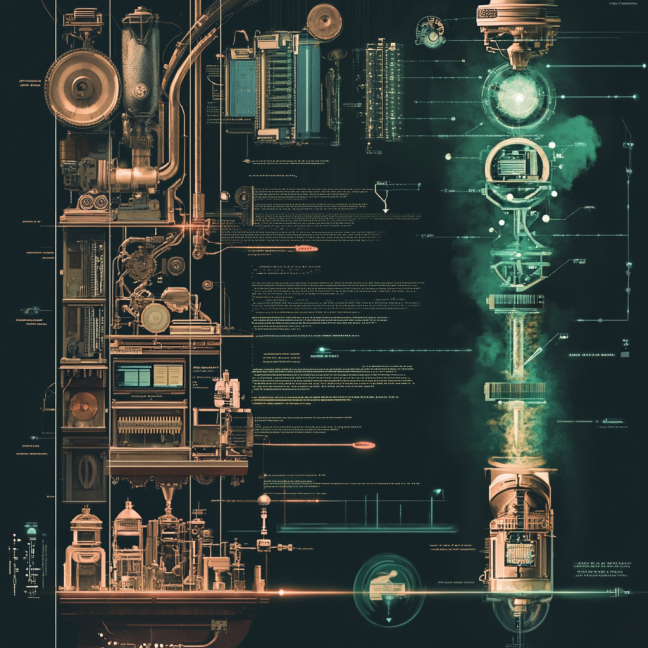In the grand timeline of human progress, certain moments stand out as game changers those points in history when new technologies not only changed the way we live but redefined what we thought was possible. Just as the steam engine powered the Industrial Revolution, Nvidia’s groundbreaking GPUs are fueling a new era of artificial intelligence (AI). Let’s take a journey through time to see how Nvidia’s rise parallels history’s most pivotal technological advancements.
1450s: The Printing Press & CUDA (2006)
Revolutionizing Information Access
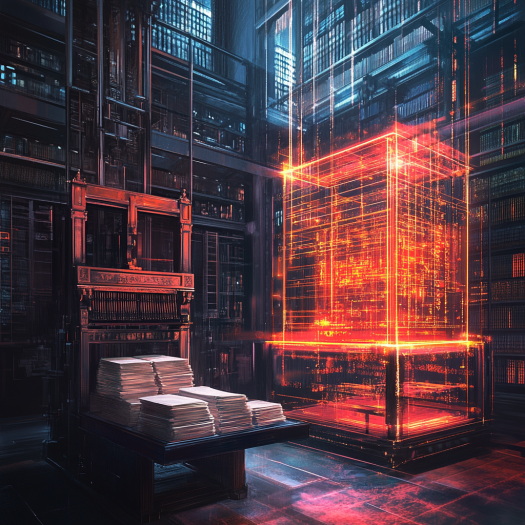
Then: Johannes Gutenberg’s printing press democratized knowledge, making books accessible to the masses and igniting the spread of ideas across Europe. It catalysed the Renaissance, empowering thinkers to share revolutionary concepts far and wide.
Now: In 2006, Nvidia introduced CUDA (Compute Unified Device Architecture), a revolutionary platform that made high-performance computing accessible to developers around the world. Like the printing press, CUDA democratized a powerful tool, enabling breakthroughs in fields ranging from medicine to physics. CUDA was the spark that lit the fuse of today’s AI explosion, much like how the printing press ignited the Renaissance.
1760s: The Steam Engine & Nvidia’s GPUs (1993)
Powering a New Era
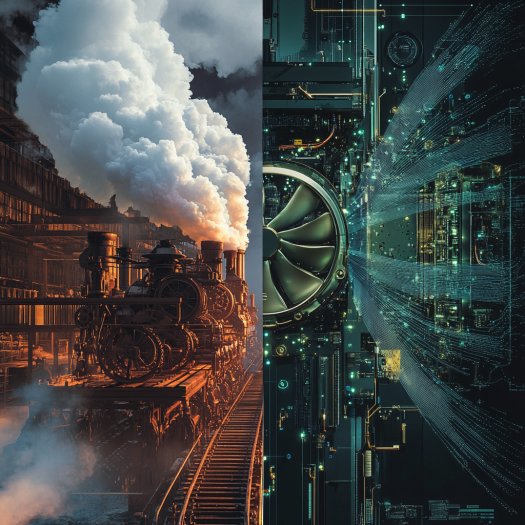
Then: James Watt’s improvements to the steam engine in the 1760s powered the Industrial Revolution, transforming agriculture, manufacturing, and transportation. The steam engine was the beating heart of a new age, driving unprecedented economic growth and societal change.
Now: In 1993, Nvidia was founded with a mission to revolutionize computing through graphics processing units (GPUs). Initially designed to enhance gaming, these GPUs have evolved into the engines of modern AI, just as the steam engine once powered factories and locomotives. Nvidia’s GPUs are now at the core of data centres and supercomputers, driving advancements in AI, much like the steam engine powered by the Industrial Revolution.
1870s: The Telephone & Nvidia’s AI Journey (2012)
Connecting the World in New Ways
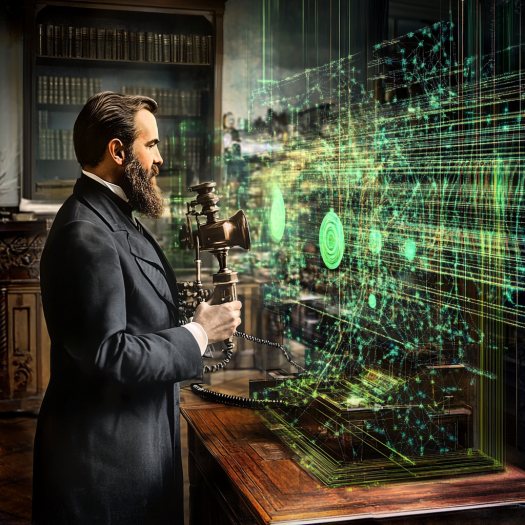
Then: Alexander Graham Bell’s invention of the telephone in 1876 shrank the world, enabling instant communication across vast distances. It was a technological leap that forever changed how people connected and did business.
Now: Nvidia’s journey into AI took a significant leap in 2012 with the advent of AlexNet, a deep learning model that demonstrated the power of GPUs for AI tasks. This breakthrough was akin to the invention of the telephone, connecting complex data points and enabling machines to “communicate” and learn in ways previously unimaginable. Just as the telephone revolutionized communication, Nvidia’s AI technology is transforming industries by connecting data and accelerating innovation.
1940s: The First Computers & Nvidia’s RTX (2018)
From Calculation to Simulation
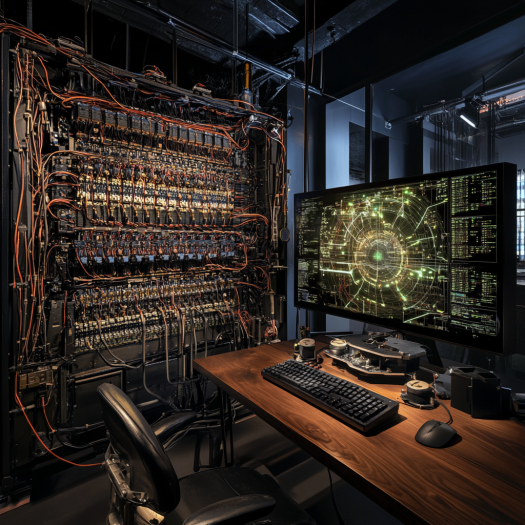
Then: The 1940s saw the birth of the first electronic computers, like ENIAC, which could perform complex calculations far faster than any human. These machines laid the groundwork for the digital age, changing the course of history.
Now: In 2018, Nvidia introduced RTX, the world’s first real-time ray tracing GPU, which brought cinema-quality graphics to video games and simulations. RTX is to visual computing what the first computers were to calculations a revolutionary leap that enables real-time, photorealistic rendering, transforming how we visualize and simulate the world.
1990s: The Internet & Nvidia’s Omniverse (2023)
Building a New Digital World
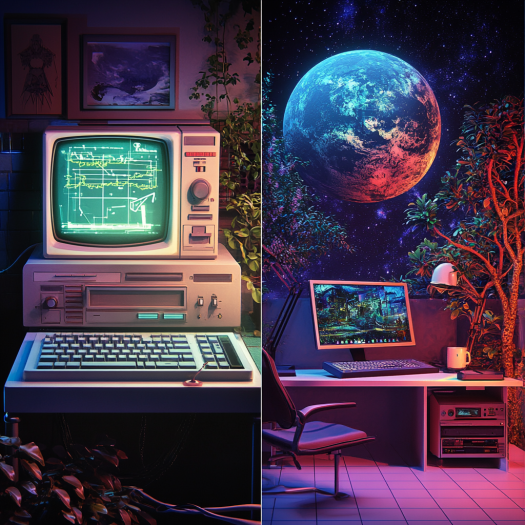
Then: The internet, which came of age in the 1990s, connected the world in a web of information, commerce, and communication. It became the backbone of modern society, enabling the digital revolution.
Now: Nvidia’s Omniverse platform, unveiled in its full capacity in 2023, is the next step in the evolution of digital connectivity. Much like the internet connected the world, Omniverse connects virtual and physical worlds, enabling collaborative 3D simulation and digital twins on an unprecedented scale. It’s the new digital frontier, where industries from automotive to entertainment can innovate in a shared, virtual environment.
2020s and Beyond: The AI Industrial Revolution
Nvidia’s Blackwell GPUs (2024) Redefining the Future
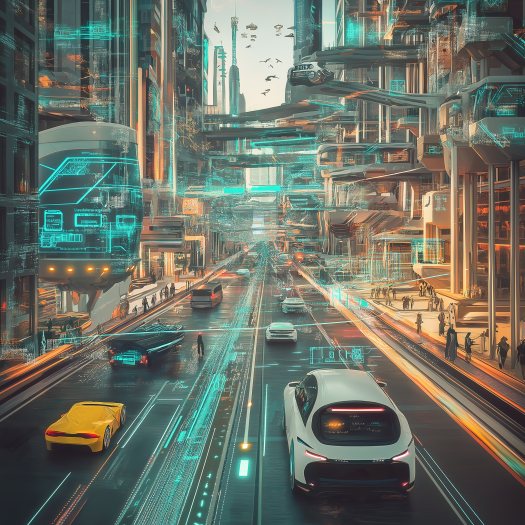
Now: As we move into the 2020s, Nvidia’s Blackwell GPUs are set to redefine the future of AI and computing, much like the steam engine did for the Industrial Revolution. These chips are designed to handle the massive data processing needs of AI with unprecedented efficiency, marking a new era where AI-driven technology will be at the heart of everything from healthcare to autonomous vehicles.
Future: Just as past revolutions created the modern world, Nvidia’s innovations are laying the groundwork for the next leap forward a world where AI seamlessly integrates into every aspect of life, driving progress in ways we’re only beginning to imagine.
The Continuum of Innovation
From the printing press to the steam engine, and from the telephone to the internet, each technological leap has brought us closer to a more connected, efficient, and innovative world. Nvidia’s journey through AI is the latest chapter in this ongoing story. As we stand on the brink of this new revolution, Nvidia isn’t just making chips it’s writing the future, one innovation at a time.
Blackwell GPUs: The Dawn of a New Era

At the 2024 Graphics Technology Conference (GTC), Nvidia unveiled the Blackwell GPUs, signalling a bold new chapter in AI computing. These chips are not just incremental upgrades; they represent a significant leap forward in performance, capable of handling AI tasks with unprecedented speed and efficiency. The B100 and B200 models, in particular, are set to redefine what’s possible in data processing and machine learning.
The Blackwell GPUs boast a design that integrates two semiconductor dies into one unit, connected by a super-fast link that handles 10 terabytes of data per second. This innovative approach eliminates common bottlenecks, such as memory delays and cache disruptions, making the Blackwell GPUs a unified powerhouse.
However, this leap in technology comes with its challenges. The production costs for Blackwell are significantly higher than previous models, raising concerns about profit margins and market adoption. Yet, Nvidia is betting that the superior performance of these GPUs will justify the costs, allowing them to command premium prices in a rapidly growing market.
Nvidia’s Market Rollercoaster: Riding the Waves of AI Innovation
Despite these technological advancements, Nvidia’s stock has been anything but stable. The recent market volatility has seen Nvidia’s shares fluctuate, reflecting both the excitement and uncertainty surrounding the company’s ambitious AI endeavours. Investors are watching closely as Nvidia navigates this new landscape, with many betting on the long-term potential of its cutting-edge technology.
In particular, the recent dip in Nvidia’s stock has sparked concerns about the broader impact on AI development. While the company remains a key player in providing the computational horsepower necessary for AI, the competitive landscape is intensifying. Rivals like AMD and Intel are making significant strides, challenging Nvidia’s dominance in the market.
A Legacy of Innovation: Looking Ahead
As Nvidia continues to push the boundaries of what’s possible in computing, it’s clear that the company’s journey is far from over. The introduction of Blackwell GPUs marks a pivotal moment not just for Nvidia, but for the entire tech industry. These chips are poised to power the next wave of AI advancements, from autonomous vehicles to supercomputing, and even humanoid robots.
However, the road ahead is fraught with challenges. The tech industry is notoriously volatile, and the pressure on Nvidia to deliver on its promises is immense. Yet, if history is any indication, Nvidia has the resilience and innovative spirit to not only meet these challenges but to redefine the future of technology once again.
Jensen Huang’s Vision for the Future

Nvidia’s CEO Jensen Huang once shared his thoughts on the company’s journey, saying, “We are in the business of inventing the future. Each breakthrough we achieve is a step toward creating a world where technology can improve the human condition in ways we never imagined possible.” Huang’s vision encapsulates the spirit of Nvidiaan organization that doesn’t just adapt to change but actively drives it.
#Nvidia #AIRevolution #TechInnovation #ArtificialIntelligence #GPUs #BlackwellGPUs #TechHistory #JensenHuang #AIComputing #TechBlog #FutureOfAI #InnovationJourney #TechLeaps #AIEvolution #DigitalRevolution
